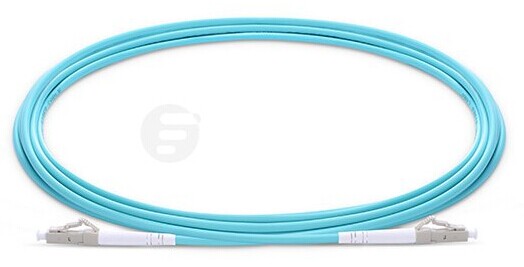Typical Cable Components for Network Connection
With the development of fiber optic technology in recent years, fiber cabling plays a more and more important role in data center applications. Meanwhile, typical cable components involved in transmitting data from the network area to the telecommunications room or enclosure have caught more and more attention from users in the field of telecommunications. These typical cable components mainly include horizon cable, backbone cable, and patch cables which will be introduced in this article.
Patch cords are used in in patch panels to provide the connection between field-terminated horizontal cables and network connectivity devices and connections between the telecommunications outlets and network devices such as printers, computers, and other Ethernet-based devices. They are part of the network wiring you can actually see. Since the fact that a chain is only as strong as its weakest link. Because of their exposed position in structured cable infrastructures, patch cords are always the weakest link. Patch cords include optical fiber patch cable.
Fiber optic patch cords refer to those fiber optic cables with connectors on both ends, which can be directly and rapidly connected to computers or other equipment. With a thick layer of protection, patch cords are usually used to connect the optical transmitter, receiver as well as the terminal box. It is widely accepted that in terms of transmission medium, the fiber patch cords can be defined into two categories: single-mode fiber patch cords and multimode fiber patch cords.
The name horizontal cable and backbone cable have nothing to do with the cable’s physical orientation toward the horizon. Horizontal cables run between a cross-connect panel in a telecommunications room and telecommunications room and a telecommunications outlet located near the work area. Backbone cables run between telecommunications rooms, and enclosures, and the main cross-connect point of a building, it usually located in the equipment room.
Whereas horizontal UTP cables contain solid conductors, patch cords are made with stranded conductors because they are more flexible. The flexibility allows them to withstand the abuse of frequent flexing and reconnecting. Although you could build your own field-terminated patch cords, we strongly recommend against it.
At first glance, patch cords may seem like a no-brainer, but they may actually be the most crucial components to accurately specify. When specifying patch cords, you may also require that your patch cords be tested to ensure that they meet the proper transmission-performance standards for their category. Fiber patch cables are used for fiber optic cabling. Usually it is divided into single mode fiber patch cord and multimode fiber patch cord. Single mode fiber operators to a long transmission distance, while multi-mode fiber is a short transmission distance.
Professional cable installed and cable-plant designers are called upon to interpret and/or draft cable specifications to fulfill business’ structured-cabling requirements. Anyone purchasing cable for business or home use may also have to make a decision regarding what type of cable to use. Installing inappropriate cable could be unfortunate in the event of a disaster such as a fire.
Cable plant designer can held accountable in court and held responsible for damages incurred as a result of substandard cable installation, Cables comes in a variety of ratings, and many of these rating has to do with how well the cable will fare in a fire.
Using the general overview information provided here, you should now have adequate information to specify the proper cable for your installation.
First, you must know the installation environment and what the applicable NEC and the local fire-code requirements will allow regarding the cables’ flame rating. In a commercial building, this usually comes down to where plenum-rated cables must be installed and where a lower rating is acceptable.
The second decision on cabling must be on media type. The large majority of new installations use fiber optic cable in the backbone and UTP cable for the horizontal.
For fiber optic cable, you will need to specify the fiber type first, single-mode or multimode. If it is multimode, you will need to specify the core diameter. That is 62.5/125 or 50/125. Most new installations use an 850nm, laser-optimized 50/125 multimode fiber, better know to the industry as OM3 fiber. A special fiber patch cable takes like LC SC fiber cable can be made with either OM1 62.5/125 types or OM2 50/125, simplex or duplex, connector types of ST-ST, ST-MTRJ, ST-LC, etc. The large majority of new networks use an 850nm, laser-optimized 50/125 multimode fiber, better knows to the industry as OM3 fiber. As for UTP cable, you need to specify the appropriate transmission-performance category. Most newly installations today use Cat6, and there is a growing migration to Cat6A. Make sure that you specify that patch cords are rated in the same or higher category than the horizontal cable.
